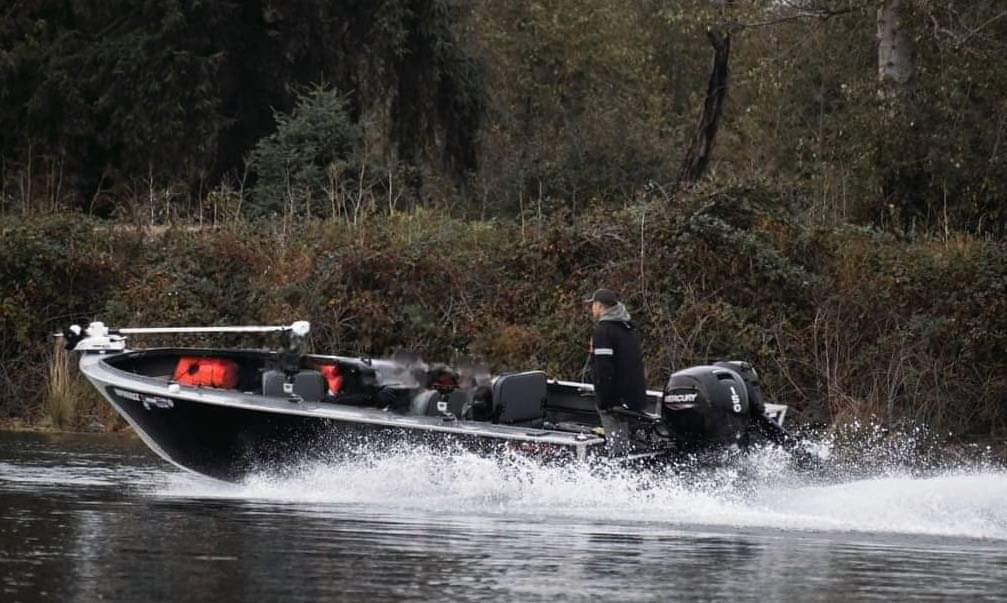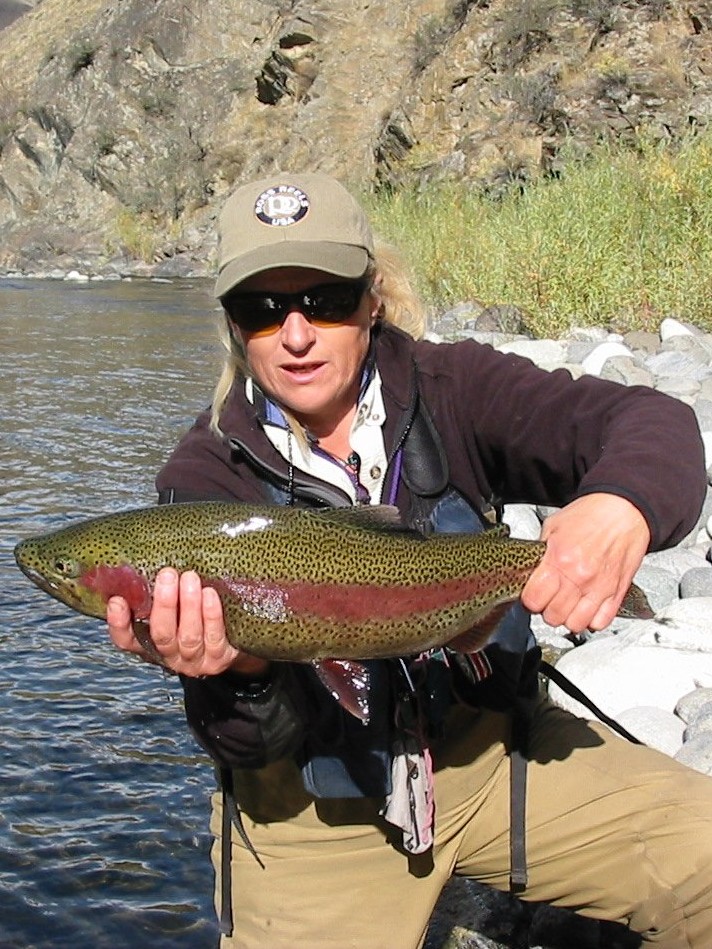Snohomish River Pink Salmon
8 Hour Trip – Winter Combo
8 Hour Trip – Fall Kings
Where No Roads Can Take You
Warm Water Guided Trips
Cold Water Guided Trips
Idaho Trout Adventure
Premier Trout Slam
River Fishing in Steamboat Springs
Missoula Float Trip
River, Lake Fishing in Bozeman
Finest Fly-Fishing Guides - Bozeman
We started Captain Experiences to make it easy to book fishing and hunting guides around the world. With over 2,000 Damn Good Guides, our platform makes finding and booking a trip seamless. Head here to check out our trips.
Rainbow and Cutthroat Trout Compared
The popularity of rainbow trout and widespread stocking efforts across the United States, create lakes, rivers, and streams where they overlap with cutthroat trout. These fish can look fairly similar which makes them difficult to tell apart. To make matters worse these two fish have been known to interbreed and create hybrid offspring that look like both parent fish species. Knowing what fish you’re looking at is important but to help keep them straight, here’s how they compare.

What is a Rainbow Trout?
Arguably the most iconic freshwater species to catch on the fly in North America, the rainbow trout is a salmonid native to cold-waters feeding into the Pacific Ocean on both the Western side of North America and the Eastern part of Asia, although the species has been introduced worldwide. It is actually one of the top invasive species around the world, mostly due to the breadth through which the fish has been manually spread, but they can also have a big impact on native species mostly through out-competing them. Rainbow trout have been transported around the world mainly for sport, and are now found on every continent except Antarctica, in many places providing a great gamefish opportunity where previously there was little.
Steelhead are a distinct anadromous form of coastal rainbow trout, meaning they live in saltwater but return up freshwater tributaries to spawn after a few years. Steelhead are the state fish of Washington, and are much more threatened than rainbow trout due to a much lower distribution and greater changes to their native habitat. While rainbow trout have been introduced into streams all over the world, steelhead rely on clear waterways in the Pacific Northwest to spawn.
Steelhead have also been introduced and do well in the Great Lakes area, spawning upstream from the lakes and erstwhile living in the lakes. Adult rainbow trout can vary in color depending on habitat and location (and steelhead trout vary even more), but they are generally distinguished by a broad red stripe along their lateral line that is most prominent along the line and fades as it expands out. They can often appear greenish/silver above and below the lateral line.
Rainbow trout are probably the most common trout globally and therefore the most commonly caught, and they are a many a beginner’s introduction to fishing in streams around the world, particularly those fishing on the fly. They can be somewhat picky with presentation and skittish in general, which makes them all the more of a treat and a challenge. Aside from bass & panfish they are the most common freshwater fish sought in the US.
How big do Rainbow Trout get?
Rainbow trout size is an interesting question, because a “good” sized rainbow trout depends entirely on where you are and how big the waterway is. Fishing the streams of the Appalachians you’ll be happy with a 1/2 pound fish but head to Alaska and you’ll expect 10 pounders.
Generally most rainbow trout are between a half pound and 5 pounds, and lake-dwelling or anadromous fish can get to 20 pounds or more, behaving and appearing much more like a salmon than a trout from a small stream.
### What is a Cutthroat Trout? ###
Cutthroat trout (Oncorhynchus clarkii), or “cutties”, are a freshwater member of the Salmonidae family that are a popular gamefish in North America, especially for fly fishermen. The name cutthroat comes from the distinguishing red coloration under their jaw, and the scientific name clarkii is in honor of William Clark, of the Lewis and Clark Expedition. They are the official state fish of seven states.
There are 14 subspecies of cutthroat trout, with several of them considered threatened due to habitat loss, and two are considered extinct. Restoration efforts to combat this loss is made by raising trout in hatcheries and stocking both native and non-native lakes. Depending on the location, cutthroat trout can range in color from golden to gray to green backs.
How big do Cutthroat Trout get?
Due to having several different species across different habitats, the size of a cutthroat trout can vary greatly. At the age of maturity, usually, after three to five years, they can be from six to 40 inches long. Typically trout that live in streams and creeks will be smaller, weighing in at around 0.4 to 3.2 ounces. Large lakes are where trout can reach 40 inches and 17 pounds, however, the average is closer to 12 to 17 pounds.
Lahontan cutthroat trout are the largest subspecies, and with the right quality of habitat and food availability, grow to an average of eight to 22 inches long, and are known for getting over 20 pounds.
What is a Cutbow Trout
When a cutthroat and rainbow trout hybridize, the offspring are called cutbow trout. These fish can vary in appearance and are hard to distinguish from the parent species. These fish tend to have the white tipped fins of a rainbow trout with the red, pink, or orange coloration on their gill plates. These fish also generally grow to a similar size as the parent species. The best place to catch cutbow trout is in western states where both species overlap.
Rainbow vs Cutthroat vs Cutbow Trout
The easiest way to determine a cutthroat from a rainbow is by the red, pink, or orange lines across their “throat,” but they also differ by having basibranchial teeth and their upper jaw extending past their eye.
Distinguishing between a cutthroat and rainbow trout can become even more difficult when you come across a cutbow. A cutbow is a species of trout created when a cutthroat and rainbow trout breed. Cutthroat trout are known to also naturally breed with gila and apache trout.
Joey Butrus
Updated on July 31, 2023

May 13, 2024

June 22, 2022

October 26, 2020

August 21, 2023

January 19, 2021
Related Articles
May 23, 2022
May 10, 2023
May 18, 2022
Featured Locations
- Fishing Charters Near Me
- Austin Fishing Guides
- Biloxi Fishing Charters
- Bradenton Fishing Charters
- Cabo San Lucas Fishing Charters
- Cancun Fishing Charters
- Cape Coral Fishing Charters
- Charleston Fishing Charters
- Clearwater Fishing Charters
- Corpus Christi Fishing Charters
- Crystal River Fishing Charters
- Dauphin Island Fishing Charters
- Daytona Beach Fishing Charters
- Destin Fishing Charters
- Fort Lauderdale Fishing Charters
- Fort Myers Fishing Charters
- Fort Walton Beach Fishing Charters
- Galveston Fishing Charters
- Gulf Shores Fishing Charters
- Hatteras Fishing Charters
- Hilton Head Fishing Charters
- Islamorada Fishing Charters
- Jacksonville Fishing Charters
- Jupiter Fishing Charters
- Key Largo Fishing Charters
- Key West Fishing Charters
- Kona Fishing Charters
- Lakeside Marblehead Fishing Charters
- Marathon Fishing Charters
- Marco Island Fishing Charters
- Miami Fishing Charters
- Montauk Fishing Charters
- Morehead City Fishing Charters
- Naples Fishing Charters
- New Orleans Fishing Charters
- New Smyrna Beach Fishing Charters
- Ocean City Fishing Charters
- Orange Beach Fishing Charters
- Panama City Beach Fishing Charters
- Pensacola Fishing Charters
- Pompano Beach Fishing Charters
- Port Aransas Fishing Charters
- Port Orange Fishing Charters
- Rockport Fishing Charters
- San Diego Fishing Charters
- San Juan Fishing Charters
- Sarasota Fishing Charters
- South Padre Island Fishing Charters
- St. Augustine Fishing Charters
- St. Petersburg Fishing Charters
- Tampa Fishing Charters
- Tarpon Springs Fishing Charters
- Venice Fishing Charters
- Virginia Beach Fishing Charters
- West Palm Beach Fishing Charters
- Wilmington Fishing Charters
- Wrightsville Beach Fishing Charters

































